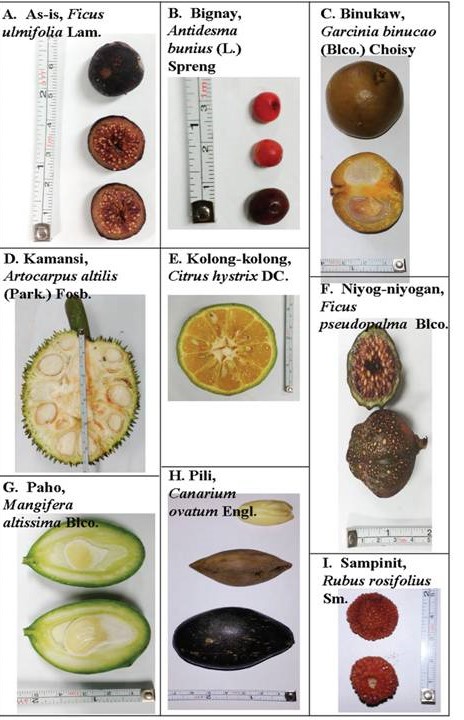
Are you familiar with as-is, binukaw, kamansi, and kolong-kolong? How about niyog-niyogan, paho, sampinit, pili, and bignay? You may not know them, but these are actually indigenous fruits in the Philippines which are all rich in antioxidants.
Chemists from the University of the Philippines Los Baños (UPLB) confirmed recently that all these fruits have high amounts of antioxidants or those that take damage-causing free radicals from the body.
Free radicals in the body are formed either from our normal metabolic processes or from exposure to bad environment (i.e. cigarette smoke, air pollutants). Antioxidants then take up these free radicals, thereby preventing them from causing any harm from your body.
Both the World Health Organization and the Department of Health have been non-stop in reminding the public to maintain a healthy diet to protect the body from COVID-19. One way to achieve this is to eat nutritious fruits and vegetables.
Among the nine, paho, binukaw and as-is have the highest total phenolics. Phenolics are a collective term for phenols, flavonoids, lignin, and tannins, that are considered as antioxidants. Experts all over the world consider these chemicals to have strong anti-cancer, anti-diabetic, and anti-inflammatory benefits, among others.
Whether ripe or unripe, the mango-lookalike paho can be eaten fresh or mixed with salads. They can thrive anywhere in the country but they are mostly grown in Cavite and Batangas.
Meanwhile, binukaw or batuan can be a souring agent or (pampaasim) in some dishes in the Visayas. On the other hand, the leaves and young shoots of as-is are a favorite in the Bicol region.
Pili could be the most famous among the nine due to pili nuts being brought as pasalubong by those who came back from Bicol. Pili was found to be rich in alkaloids that help protect the body from parasites.(By David Matthew C. Gopilan, DOST-STII)


















 21 in 2021 Technology Catalogue
21 in 2021 Technology Catalogue 21 in 2021 Technology Catalogue
21 in 2021 Technology Catalogue DOST Innovations - Web and Mobile Applications for Disaster Risk Reduction and Management
DOST Innovations - Web and Mobile Applications for Disaster Risk Reduction and Management